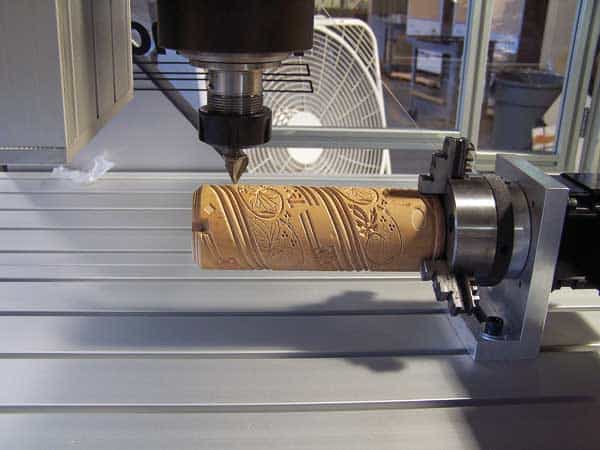The world of computer-controlled machining has experienced incredible advancements over the past few decades. Among the most significant developments is the introduction of the 4 axis CNC router. This powerful machine offers manufacturers, designers, and hobbyists a deeper level of precision and flexibility that surpasses traditional 3 axis models. As the demand for more complex, accurate, and efficient machining grows, 4 axis CNC routers are quickly becoming essential tools across many industries. To get more details, visit here https://www.omni-cnc.com/product/4-axis-cnc-router/.

What Makes a CNC Router “4 Axis”?
A 4 axis CNC router operates with the same foundational principles as its 3 axis counterpart but with a critical enhancement—rotation. While a 3 axis machine moves a tool along the X, Y, and Z axes (left-right, forward-backward, and up-down), a 4 axis router introduces a fourth movement through rotation, typically referred to as the A axis. This added degree of movement allows the tool or workpiece to rotate, giving access to multiple sides without manual repositioning. The result is faster, more complex machining with fewer setup steps and reduced margin for error.
Expanding What’s Possible in Fabrication
The true value of a 4 axis CNC router lies in its ability to produce complex parts that would be nearly impossible—or extremely time-consuming—to make with a 3 axis machine. This includes contoured surfaces, spiral cuts, and undercuts. Cylindrical objects such as table legs, moldings, and custom posts can be crafted with greater accuracy and consistency. In industries like woodworking, furniture making, marine construction, and signage, these machines offer game-changing possibilities.
Why the Fourth Axis Matters
The addition of a fourth axis changes the efficiency and scope of what you can create. It enables users to perform continuous machining from multiple angles in a single setup. This not only saves time but also ensures that the precision of one side carries seamlessly over to the next. With 3 axis routers, achieving the same result often involves multiple setups, which can increase the chance of misalignment. A 4 axis machine eliminates that concern by rotating the workpiece on its own axis, giving the router tool complete access without repositioning.
Ideal for Detailed and Sculptural Work
When working on artistic or custom pieces, such as sculptures, decorative furniture, or intricate signage, detail matters. The 4 axis CNC router shines in these applications because it allows for incredibly smooth transitions across curves and rounded surfaces. It can produce more natural finishes and contouring compared to the stepped effect often left by standard 3 axis operations. For industries where aesthetics are as important as functionality, the difference is visible and valuable.
The Importance of Software Compatibility
One critical component of utilizing a 4 axis CNC router to its full potential is having the right software. Advanced CAD/CAM software allows you to model the design in 3D, simulate rotations, and define toolpaths that integrate all four axes. Without this level of control, the added mechanical capability of the machine would be underutilized. Modern CNC software platforms now include 4 axis modules, making it easier for operators to create, preview, and refine complex jobs before starting the cut.
Operator Skill and Training Still Matter
Despite the automation benefits, operator expertise is still crucial for safe and effective use of a 4 axis CNC router. From setup and material clamping to tool changes and calibration, having skilled technicians ensures optimal output and machine longevity. Understanding the relationship between tool geometry, cutting speeds, and material type is essential to prevent errors and maintain consistent quality throughout a production run.
Applications Across Industries
The use cases for 4 axis CNC routers are wide and varied. In the architectural millwork industry, professionals use them to produce ornate columns and curved moldings. In automotive and aerospace sectors, they help fabricate lightweight components from aluminum or composites. Artists and sculptors can craft 3D statues and functional art with extraordinary detail. Sign makers use them to carve detailed logos, lettering, and graphics into curved surfaces, opening creative avenues that 3 axis machines can’t handle with ease.

Choosing the Right 4 Axis Router for Your Needs
Before investing in a 4 axis CNC router, it’s important to assess the kind of work you plan to produce. Consider the size of your projects, the types of materials you’ll work with, and the level of precision required. Machines vary in bed size, spindle speed, build quality, and rotary axis configuration. Be sure to evaluate the software packages, training support, and service plans offered by the manufacturer. A well-matched machine will not only enhance your capabilities but also support your long-term growth.
Conclusion: A Smart Step Toward Advanced Fabrication
A 4 axis CNC router is more than just an upgrade—it’s a strategic investment in speed, capability, and design freedom. By eliminating manual repositioning and enabling complex 3D machining, these machines streamline workflows and expand creative horizons. Whether you’re in woodworking, industrial production, or digital art, embracing 4 axis technology puts you at the forefront of innovation. As demand for precision and customization continues to grow, those equipped with the right tools will lead the future of fabrication.




.png)
Comments